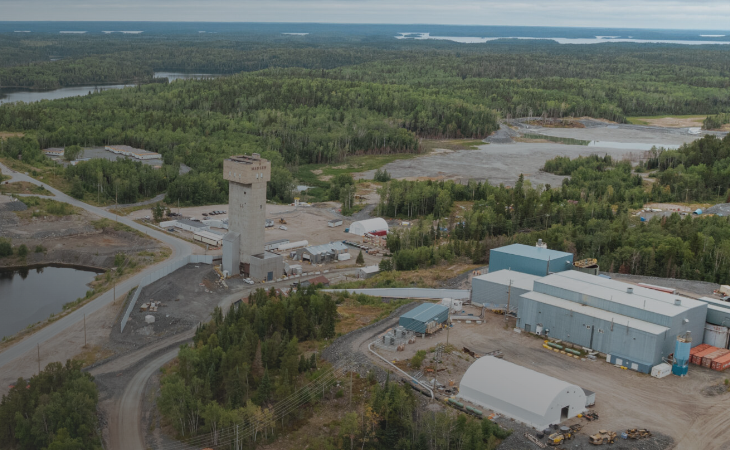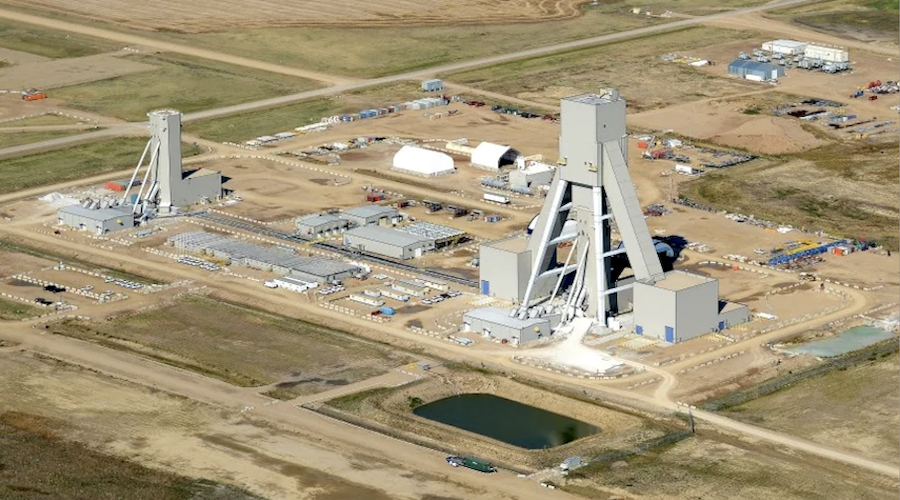VANCOUVER — Another drill season is underway for partners Fission Uranium (TSXV: FCU) and Alpha Minerals (TSXV: AMW) at the 50-50 Patterson Lake South (PLS) joint venture located in the southern reaches of Saskatchewan’s Athabasca Basin, and the companies’ eye opening rate of drill success looks to be carrying over to yet another campaign.
Results from a US$6.9 million exploration program — budgeted for 11,000 metres over 44 holes — have been rolling in fast and furious since mid-July, and on Aug. 15 Fission-Alpha announced the discovery of a fourth zone of uranium mineralization and off-scale radioactivity on strike from three previously discovered zones — namely R00E, R390E, and R780E — along a trend that now runs for over a kilometre.
Fission-Alpha's new zone at PLS, referred to as R945E, lies roughly 165 metres east of zone R780E, which had previously represented the easternmost extension on the property. Discovery hole 13-084 returned 2.7 metres total composite off-scale mineralization, within 18 metres of total mineralization. The companies report that the hole is still in progress at a depth of 302 metres.
“With the discovery of this [mineralization], we have now identified a [fourth] separate mineralized zone [along strike]," commented president and COO Ross McElroy. "The significant breadth of mineralization in this drill hole will be aggressively followed up. Taken as a whole, this is further evidence that PLS is host to an extensive mineralized system.”
The R945E discovery was triggered by a radon-in-water anomaly identified during a radon-in-water and radon-in-sediment survey program polished off in April. Fission-Alpha note that "the radon anomaly is the strongest radon-in-water anomaly encountered to date."
Hole 13-084 was vertical, with the upper part of the lithologic sequence being comprised of alternating quartzitic and pelitic gneiss before transitioning into more pelitic-gneiss dominated sequences, and finishing at depth in alternating pelitic, semi-pelitic and quartzitic gneiss.
And the new discovery is just the latest of a number of step out successes the companies have reported over the past six weeks. On Aug. 12 Fission-Alpha released assays from the first drill hole of the season at R780E. Hole 13-080 was collared around 10 metres south of hole 13-060, which intersected multiple zones of basement mineralization including 7 metres grading 1.22% U3O8.
With roughly 13 metres of composite off-scale mineralization, including 7.6 metres of continuous off-scale, hole 13-080 returned the widest continuous and strongest results thus far at R780E. The main interval of mineralization runs from a depth of 122 metres to around 171 metres, and is characterized by variably weak-to-strong radioactivity throughout, with occasional narrow intervals — between 1.5 metres and 2.5 metres in width — of barren rock. With mineralization present down to around 319 metres, hole 13-080 now represents the deepest mineralization to date at PLS.
On Aug. 8 Fission-Alpha reported results from a step out program at PLS' westernmost mineralized zone, R00E. Four close spaced holes were punched at the zone, with the companies' geological interpretation indicating that mineralization is focused in a footwall steeply south dipping package of east-northeast trending pelitic gneiss sandwiched between a semi-pelitic rock to the north and a quartz-feldspar gneiss to the south.
Hole 13-074 tested the western extent of R00E while holes 13-076, 13-077 and 13-079 tested the central area of the zone. The companies reported that all four collars intersected varying degrees of mineralization. The release was highlighted by hole 13-079, which intersected 18.5 metres of mineralization with a composite total of 5 metres off-scale radioactivity, including a 4.6-metre section of continuous off-scale radioactivity. Hole 13-077 cut two wide mineralized intervals of weak-to-moderate radioactivity separated by 3 metres of barren rock.
Fission's shares have jumped 76%, or 58¢, since the onset of the PLS summer program in mid-July, and closed up 11%, or 13¢, following news of the R945E discovery on Aug. 15 — before closing out the day at $1.34. The company maintains 150 shares outstanding for a $197 million press-time market capitalization.
Meanwhile Alpha has jumped 71%, or $2.84, per share over the past four weeks, and gained 10%, or 60¢, following the news en route to a $6.84 daily close. The company maintains 23 million shares outstanding for a $160 million market capitalization at press time.
To read more Northern Miner articles, click here





Comments